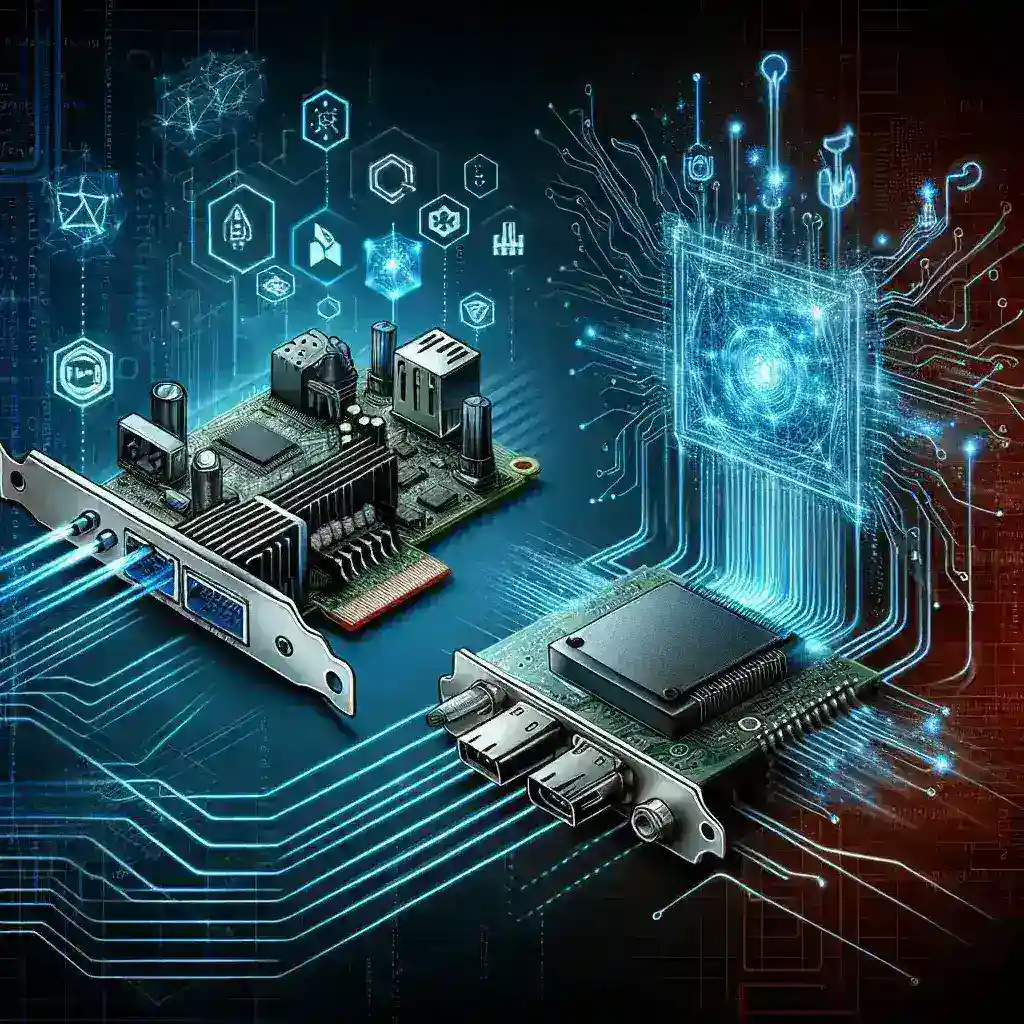Introduction
In the world of network connectivity, the choice between a software-based and hardware-based network adapter can greatly impact performance, reliability, and cost. Both types of network adapters have their own set of pros and cons, making them suitable for different scenarios and use cases. In this article, we will explore the fundamental differences between these two types of network adapters, delving into their respective advantages, disadvantages, and the contexts in which they are most effective.
Understanding Network Adapters
Before diving into the differences, it is essential to understand what network adapters are and their role in a network. A network adapter, also known as a network interface card (NIC), is a hardware component that connects a computer or other devices to a network. It allows the device to communicate with other devices over the network.
Types of Network Adapters
- Hardware-based Network Adapters
- Software-based Network Adapters
Key Differences Between Software-Based and Hardware-Based Network Adapters
The primary differences between software-based and hardware-based network adapters stem from where the networking functions are processed—in software or hardware. Below is a detailed comparison:
| Feature | Hardware-Based Network Adapter | Software-Based Network Adapter |
|---|---|---|
| Processing Power | Utilizes dedicated hardware for processing, resulting in better performance and faster data transfer rates. | Relies on the host system’s CPU for processing, which can slow down the overall system performance. |
| Cost | Generally more expensive due to the dedicated hardware components. | More cost-effective as it leverages existing system resources. |
| Installation and Configuration | Typically more complex to install and configure, may require specialized knowledge. | Easier to install and configure, often just requiring driver installation. |
| Reliability | More reliable and stable as it doesn’t rely heavily on the host system’s resources. | Less reliable, especially under heavy network loads, as it depends on the host system’s CPU and RAM. |
| Use Cases | Ideal for high-performance and enterprise environments where speed and reliability are critical. | Suitable for personal or small office use where budget constraints are a factor. |
Advantages of Hardware-Based Network Adapters
Performance
Hardware-based network adapters are known for their superior performance. They have dedicated hardware resources, such as processors and memory, to handle network operations. This offloading of tasks from the host system’s CPU results in faster data transfer rates and lower latency.
Reliability
Since hardware-based network adapters do not rely on the host system’s resources, they tend to be more stable and reliable. This makes them an excellent choice for environments where consistent connectivity is crucial, such as data centers and enterprise networks.
Advanced Features
Many hardware-based network adapters come with advanced features like hardware-based encryption, Quality of Service (QoS), and VLAN tagging. These features can significantly enhance network security and performance.
Disadvantages of Hardware-Based Network Adapters
Cost
The primary drawback of hardware-based network adapters is their cost. The dedicated components and advanced features come at a higher price point, making them less accessible for budget-conscious users.
Complexity
Installing and configuring a hardware-based network adapter can be more complex and may require specialized knowledge. This can be a barrier for users who are not familiar with network hardware.
Advantages of Software-Based Network Adapters
Cost-Effectiveness
Software-based network adapters are generally more affordable since they do not require dedicated hardware. They utilize the existing resources of the host system, such as the CPU and RAM.
Ease of Installation
These adapters are easier to install and configure. Most of the time, it is as simple as installing the necessary drivers. This ease of use makes them ideal for personal and small office environments.
Disadvantages of Software-Based Network Adapters
Performance
One of the significant drawbacks of software-based network adapters is their reliance on the host system’s CPU. This can lead to slower data transfer rates and higher latency, especially under heavy network loads.
Reliability
Since software-based network adapters depend on the host system’s resources, they can be less reliable and more prone to performance issues, particularly in high-traffic scenarios.
Use Cases and Recommendations
The choice between a software-based and hardware-based network adapter should depend on your specific needs and environment. Below are some recommendations:
Personal and Small Office Use
If you are setting up a network for personal use or a small office, a software-based network adapter is generally sufficient. It offers a cost-effective solution and is straightforward to install and configure.
Enterprise and High-Performance Environments
For environments where network performance and reliability are critical, such as data centers and large enterprises, a hardware-based network adapter is the better choice. Despite the higher cost, the investment pays off in terms of robust performance and advanced features.
Conclusion
Both software-based and hardware-based network adapters have their own sets of advantages and disadvantages. Your choice should be guided by the specific requirements of your network environment. For cost-sensitive and simpler setups, software-based adapters are an excellent option. However, for high-performance and enterprise-level networks, investing in hardware-based network adapters is advisable.
Understanding these differences can help you make an informed decision that best suits your networking needs, ensuring reliable and efficient network performance.
